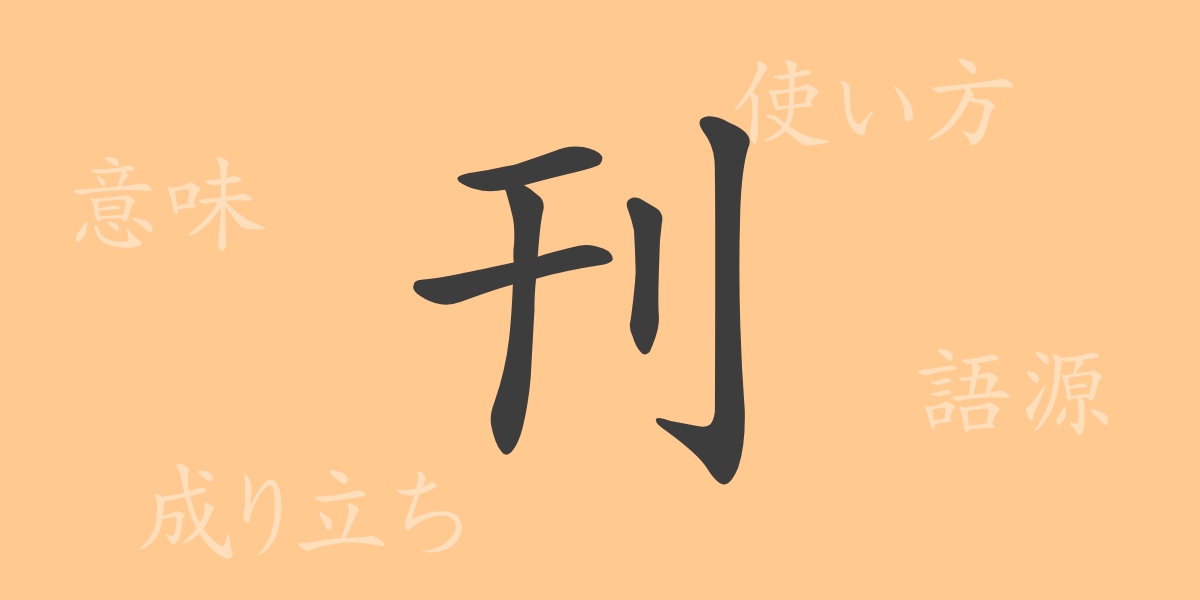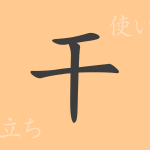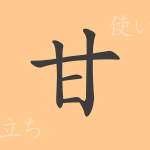The Japanese language is replete with a multitude of kanji, each with its own unique history and meaning. One of the commonly used kanji in everyday life is “刊” (Kan), yet the opportunity to delve deeply into its etymology, meanings, and usage may be surprisingly rare. This article will explore the origins of “刊” (Kan), its meanings, readings, stroke count, radical, and even phrases and idioms that use “刊” (Kan), providing a thorough understanding.
Origins of 刊 (Kan) – Etymology
To trace the origins of the kanji “刊” (Kan), we need to look back to its etymology. “刊” (Kan) evolved from a pictograph that depicted the act of carving characters in ancient China. Originally, it signified the act of carving characters into wood or bamboo, and it only came to mean publishing or printing as written characters became widely disseminated and books began to be published. This transformation is a fascinating example of how language evolves alongside societal development.
Meaning and Usage of 刊 (Kan)
The kanji “刊” (Kan) primarily means “to publish” or “to engrave an edition.” It can also refer to regularly published materials, as in “定期刊行物” (Teikikannkoubutu), meaning “periodical.” This character is used in various contexts related to publications, such as newspapers, magazines, and books. For instance, it is used to indicate the frequency of publication, as seen in words like “月刊誌” (Gekkannsi) for “monthly magazine” and “週刊誌” (Syuukannsi) for “weekly magazine.”
Readings, Stroke Count, and Radical of 刊 (Kan)
Let’s confirm the readings and basic information of the kanji “刊” (Kan).
- Readings: The on’yomi reading is “かん” (Kan), and there are no kun’yomi readings.
- Stroke Count: It has a total of 5 strokes.
- Radical: The radical is 刀部 (Katanabu), the “knife” radical.
Phrases, Idioms, and Proverbs Using 刊 (Kan) and Their Meanings
Phrases and idioms that include “刊” (Kan) often relate to publishing and printing. Here are some examples:
- 初刊 (Syokann) – Refers to the first edition of a book or magazine.
- 月刊 (Gekkann) – Something that is published monthly on a regular basis.
- 創刊 (Soukann) – The initial issue of a new publication.
- 増刊 (Zoukann) – A special issue published outside the regular publication cycle.
- 刊行 (Kannkou) – The act of publishing books or magazines.
These phrases and idioms are used to describe how publications are brought into the world, forming part of the rich tapestry of Japanese expression.
Conclusion on 刊 (Kan)
The kanji “刊” (Kan), with its simple yet potent meaning and extensive usage, plays a significant role in the Japanese language. It has become entrenched as a term related to publishing and printing, and is frequently used in everyday life. Through this article, your knowledge of “刊” (Kan), from its etymology to its meanings and applications, has been enhanced, enriching your understanding of the Japanese language.

























